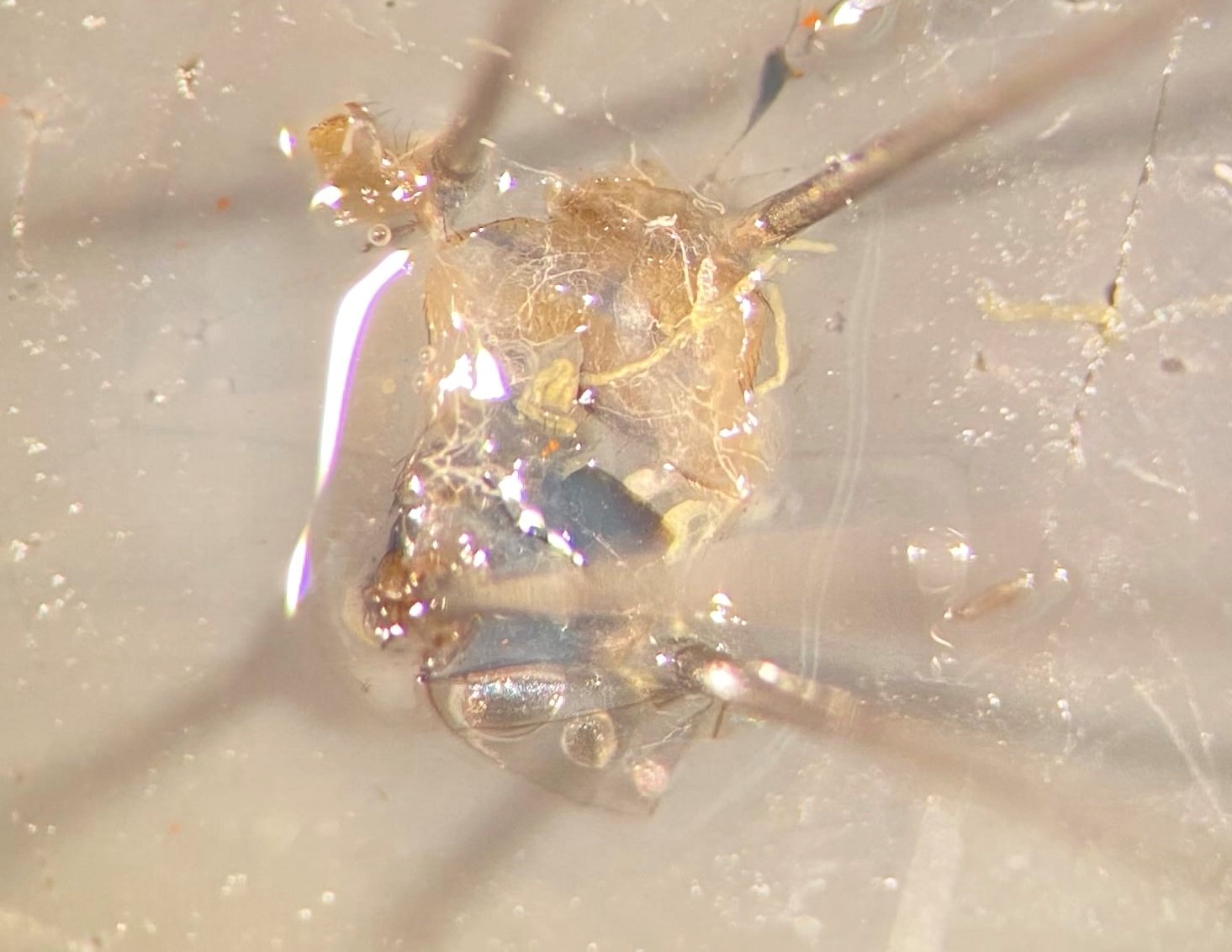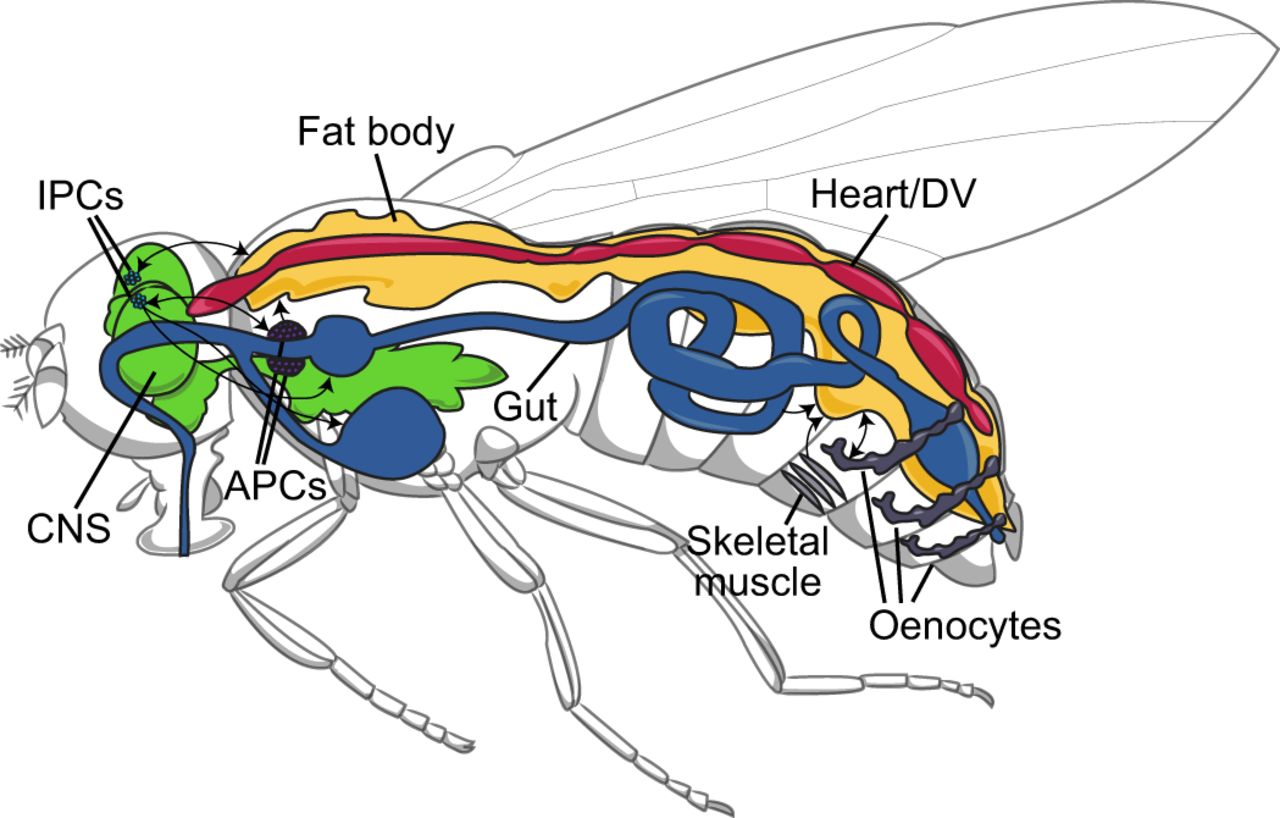Dissect fly fat body
Runhang / 2021-04-06
Insects store energy reserves in the form of glycogen and triglycerides in the adipocytes, the main fat body cell (Aresse and Soulages 2011). From an ecological perspective, insects which allocate more resources into lipid biosynthesis could sustain better during starvation while it may come as a cost for reduced reproduction. This ecological concept can be simplified into a central question in terms of life history strategy: invest yourself (being selfish) or invest your offspring (being selfless)? Here, I use Drosophila suzukii as my experimental model to study nutritional tradeoff betweeen starvation, development, and reproduction. I hypothezie that flies fed on high-sugar diet have greater starvation resistance owning to higher glucogen/triglycerides in the fat body than flies fed on high-protein deit. Have done the nutritional assays, the next step is to dissect the fat body and visualize the adipocytes from there.
Step1: Pin the head and the tip of abdomen
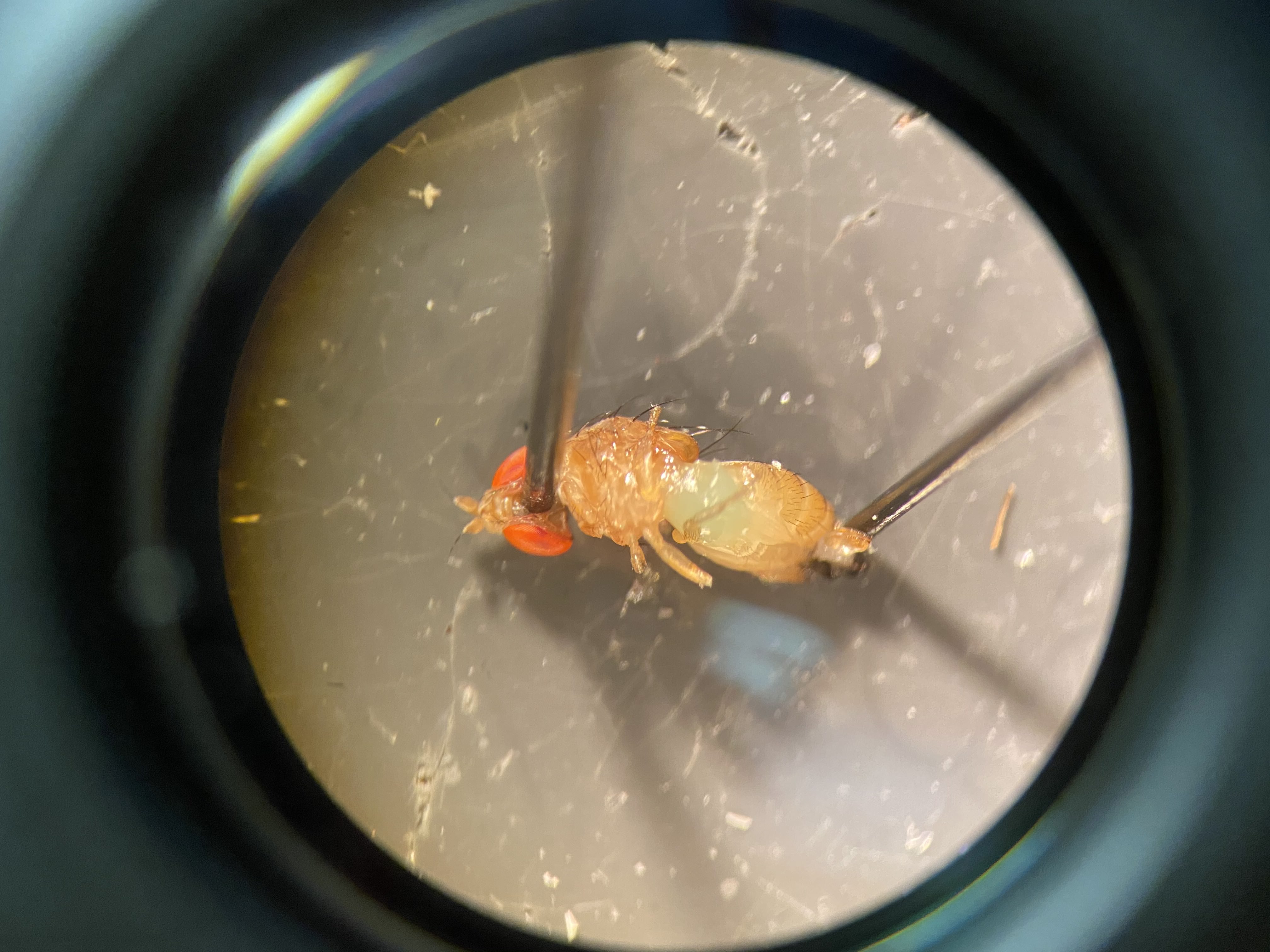
Step2: Remove wings and legs
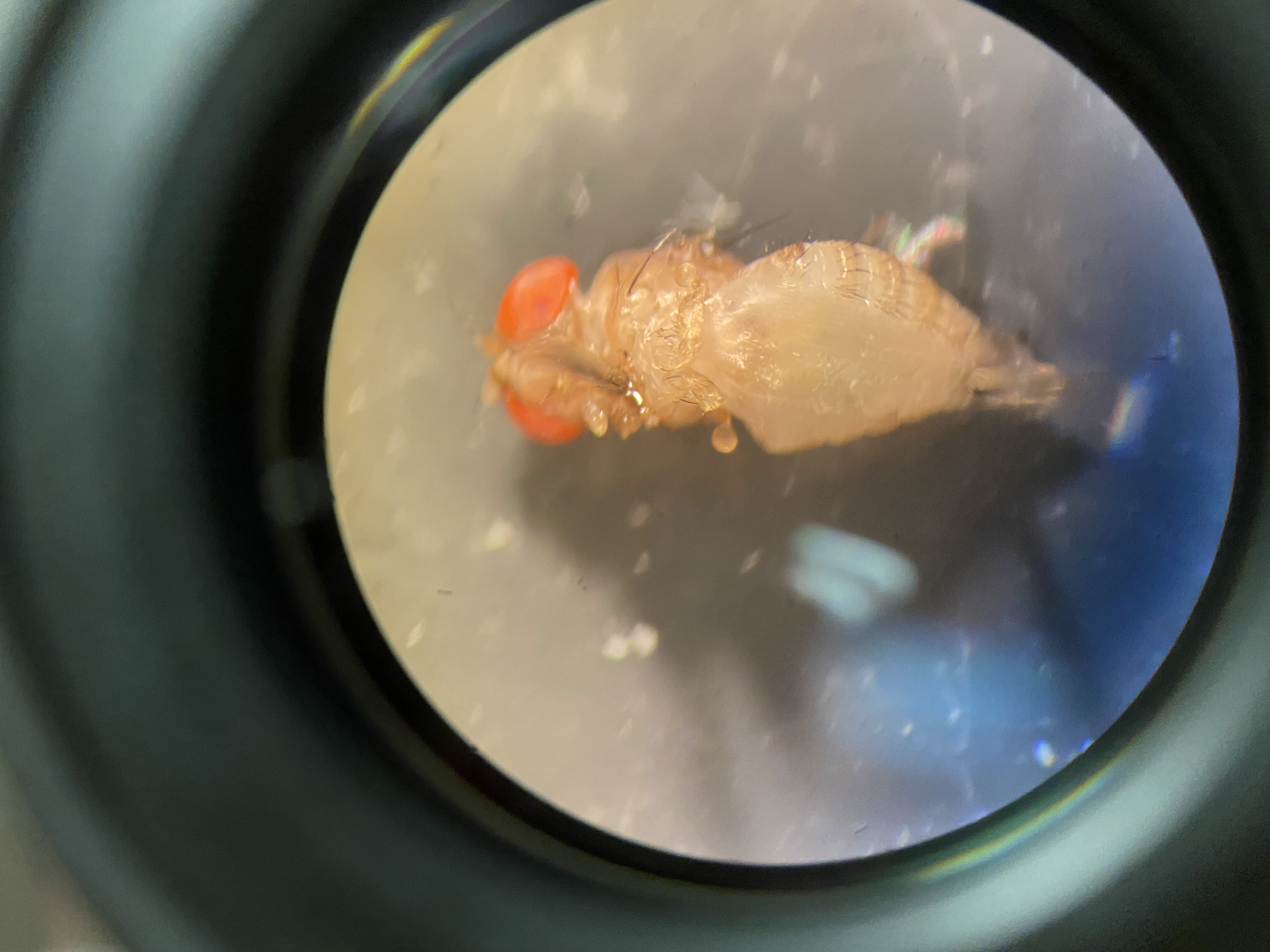
Step3: Soak in PBS buffer
Soak in PBS buffer for 10 seconds and remove the extra buffer with a pipette. Too much buffer will make the microscope hard to focus and insufficient buffer will dry really quick.
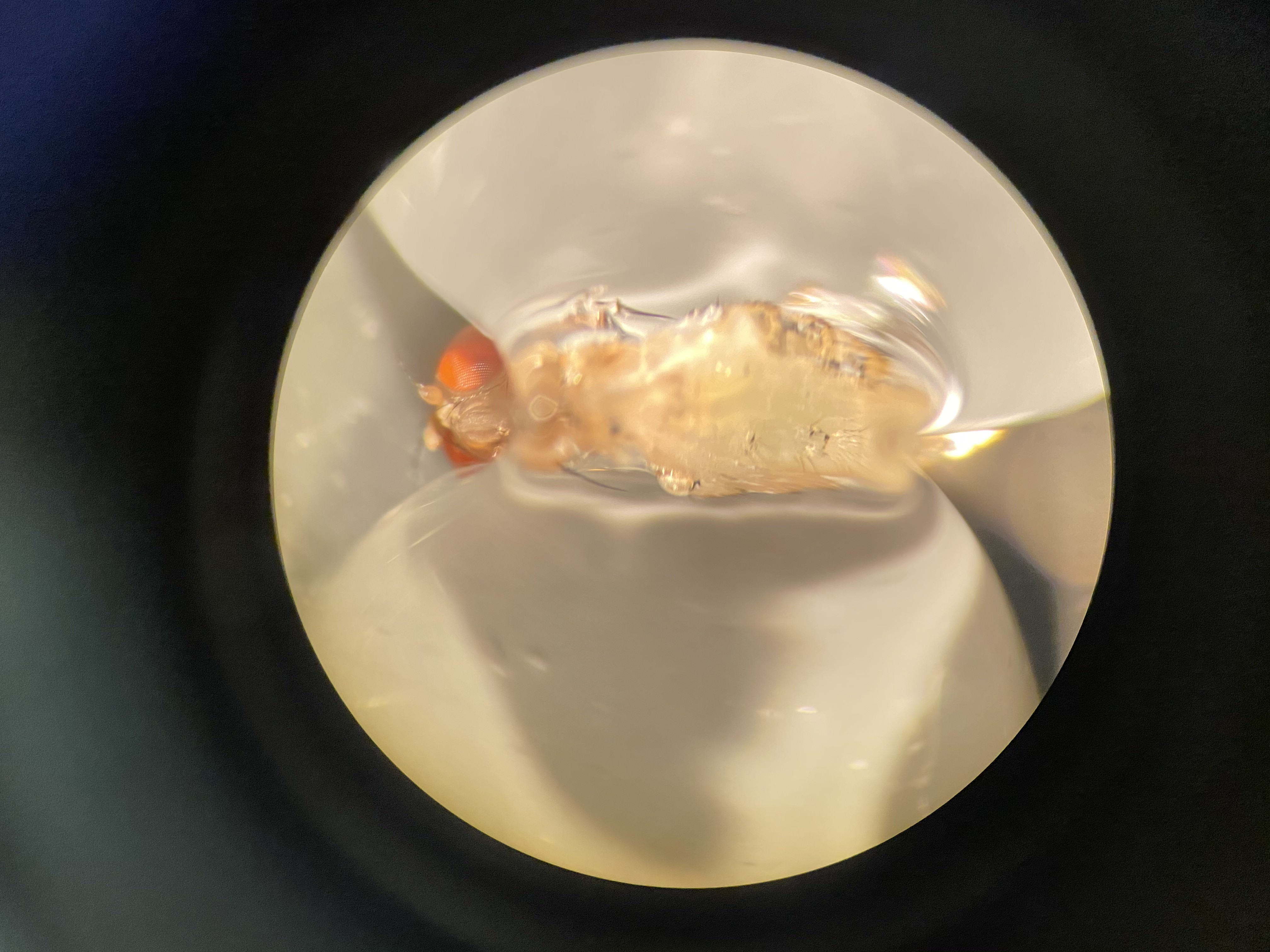
Step4: Remove the crop, gut and reprodutive organs
Use a pair of fine forceps to tease apart the abdomen (If you make the abdomen tense in the Step1, this step is easier).
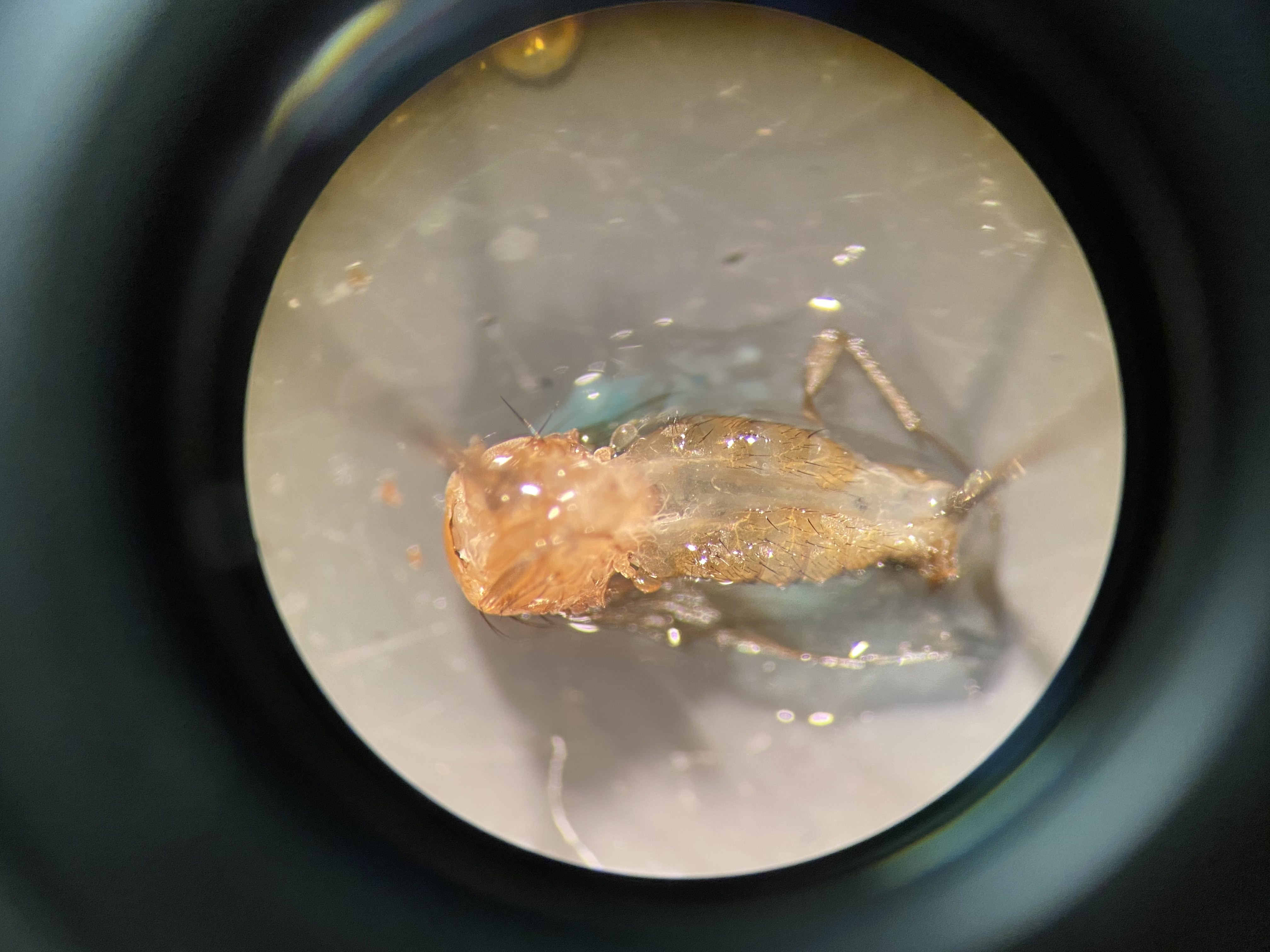
Step4: Ripe off the thorax and pin the abdoben (dorsal side) with four pins
Now, we can see the fat body is attaching with the trachea.
